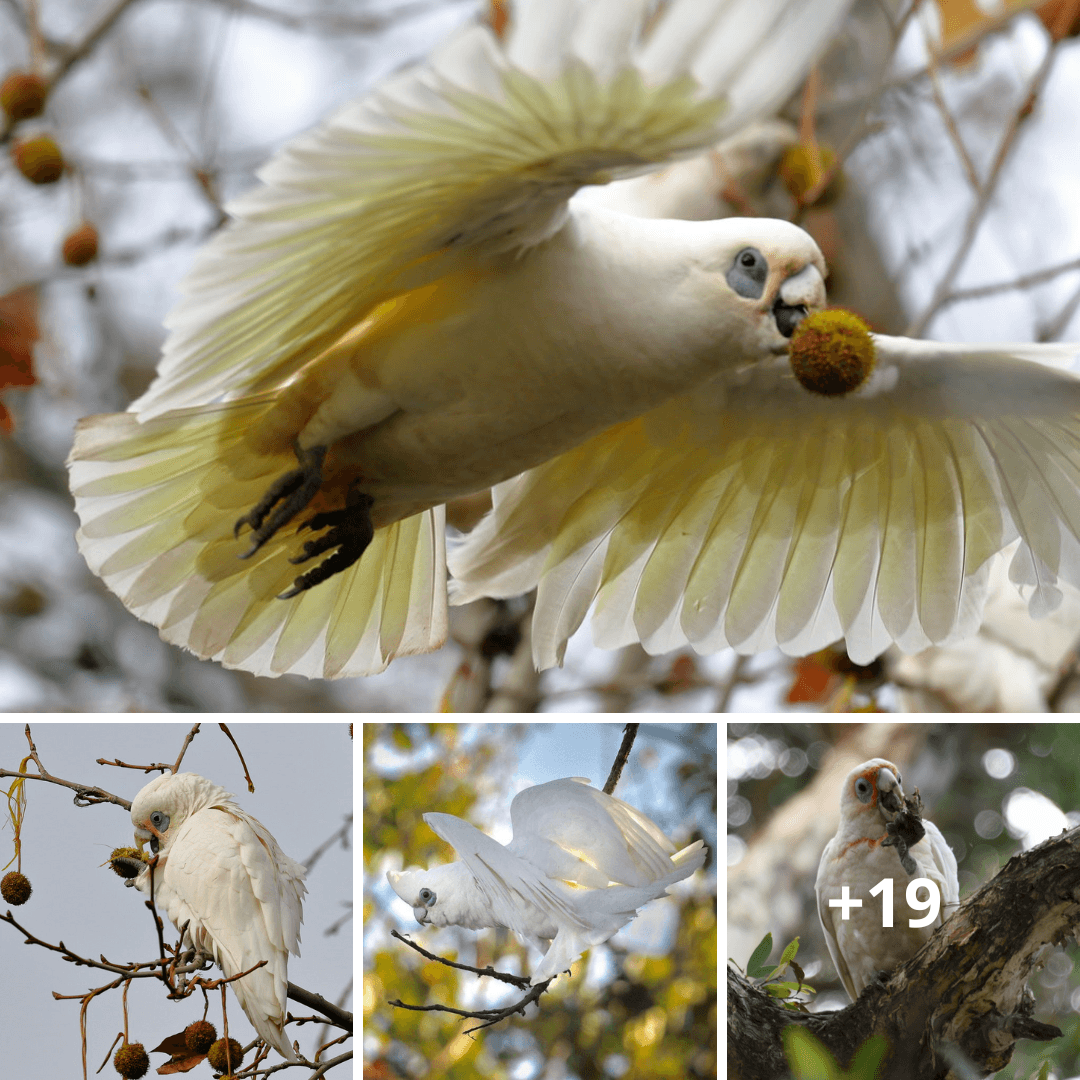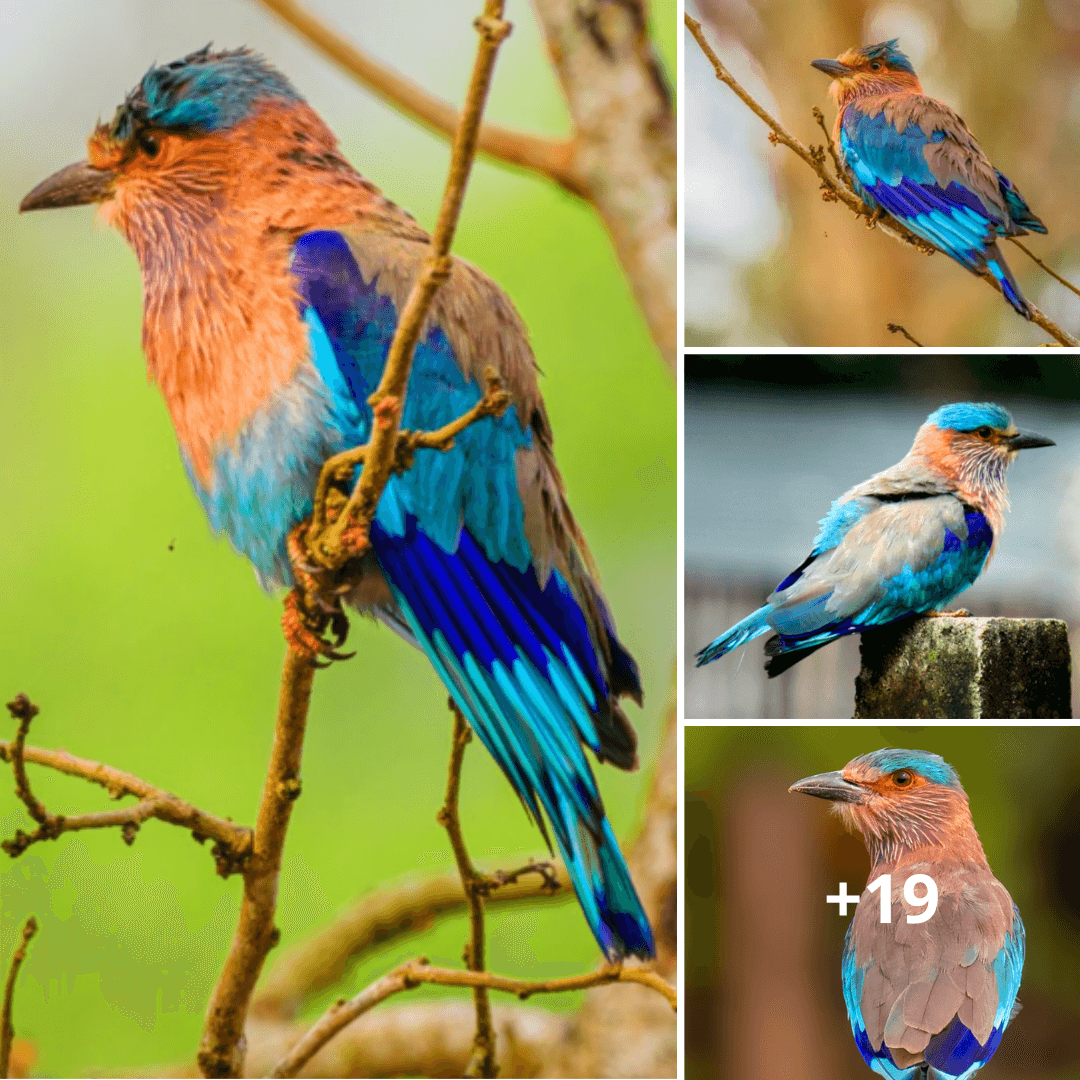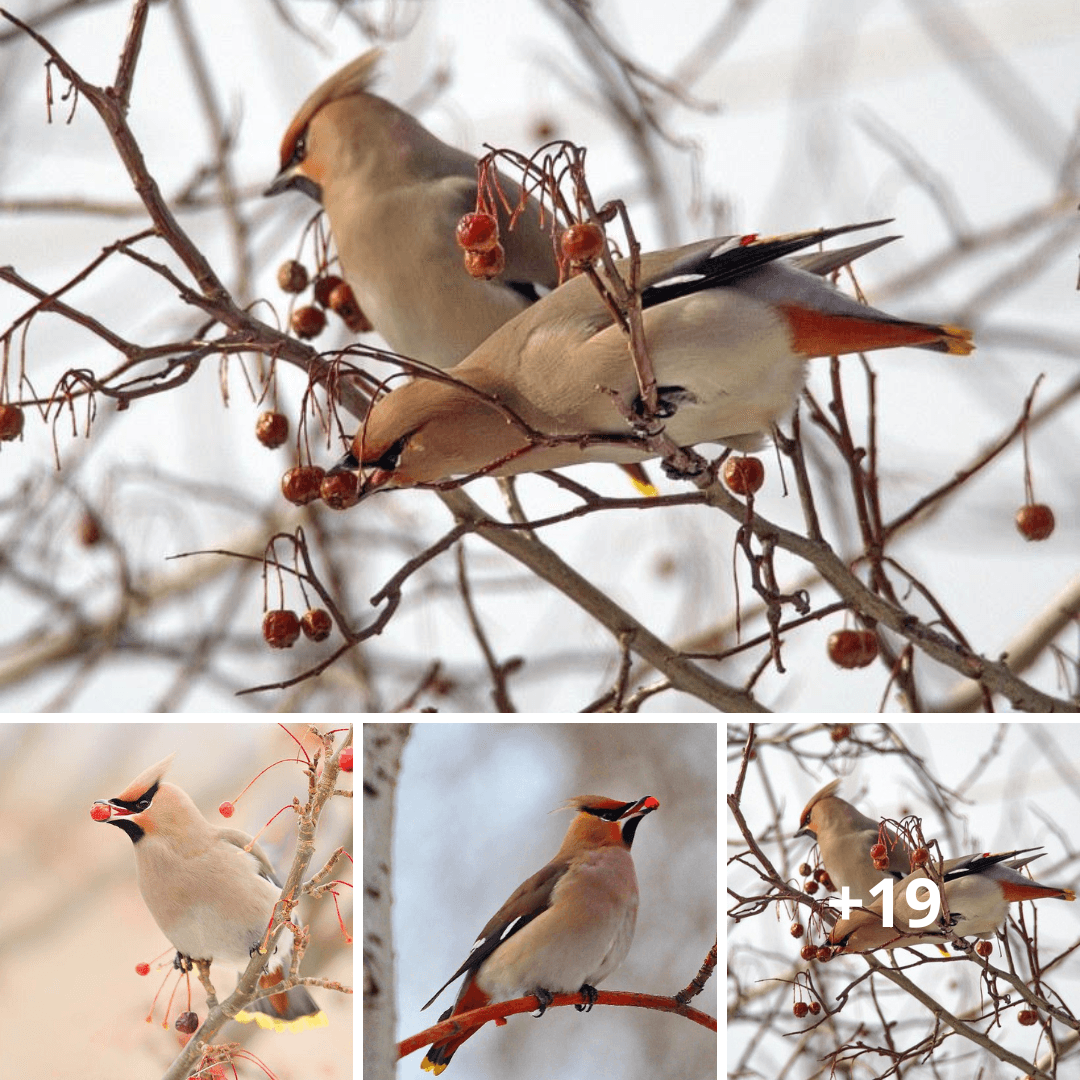Unveiling the Allure of a Snow-White Avian Virtuoso: Awe-Inspiring Acrobatics and Clever Mimicry
Pho Nguyen
- 16 Apr 2024

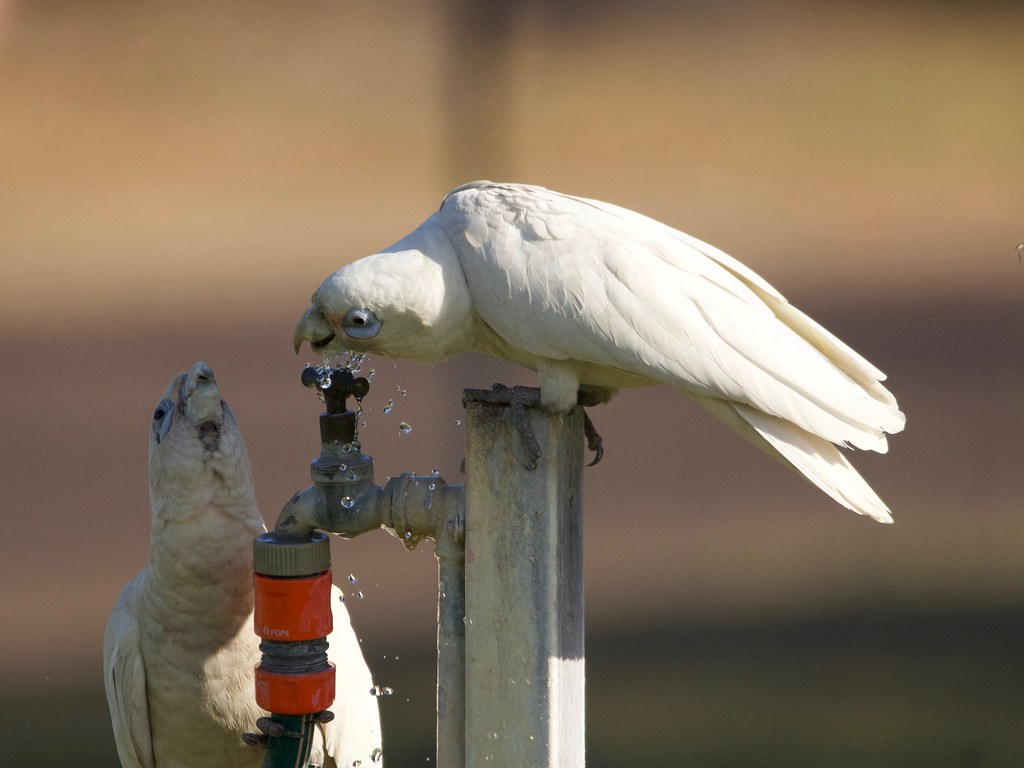
This extremely noticeable bird is noted for its propensity to congregate in large, noisy flocks, which can occasionally include of several thousand individuals, particularly in areas where there is access to water.
Take a look at the Little Corella:
“Little Corella- Circus” by birdsaspoetry is licensed under CC BY 2.0. (cropped)
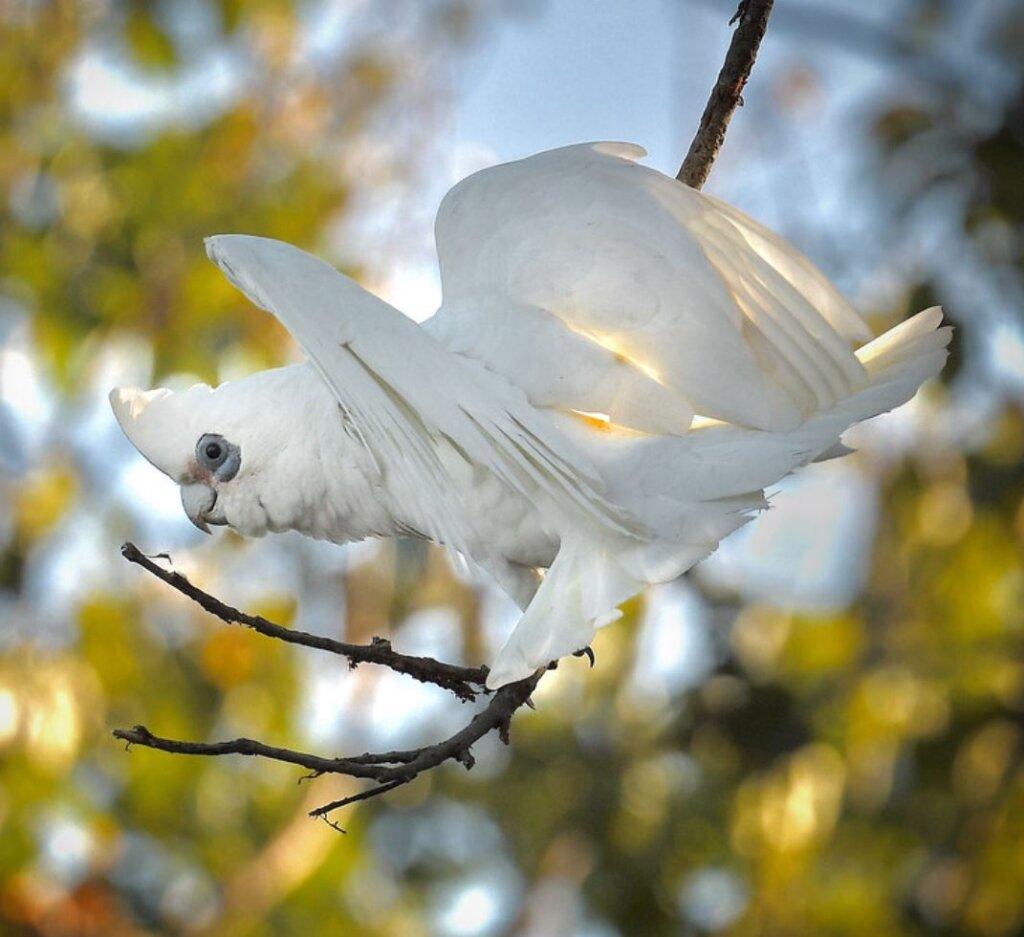
Description
The Little Corella, also known as Cacatua sanguinea, is a small white cockatoo that ranges in length from 35 to 41 centimeters (14 to 16 inches) and weighs between 370 and 630 grams (13 to 22 ounces), with an average weight of 525 grams (1.157 pounds). In terms of appearance, it is comparable to both the Long-billed Corella and the Western Corella; however, it is somewhat smaller. The top and lower mandibles of this species are of comparable lengths, in contrast to those of other species. Unlike the Long-billed Corella, it does not have the orange throat bar that is seen in that species.
“Little corellas” by CazzJj is marked with Public Domain Mark 1.0.
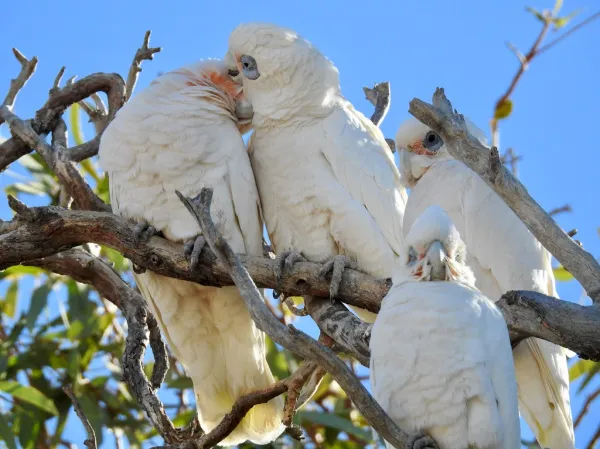
Females are slightly smaller than males in various measurements.
A white cockatoo that is native to Australia and southern New Guinea, the Little Corella is also known as the Short-billed Corella, Bare-eyed Cockatoo, Blood-stained Cockatoo, and Little Cockatoo. Other names for this bird include the Little Cockatoo.
“Little Corella” by blachswan is licensed under CC BY 2.0.
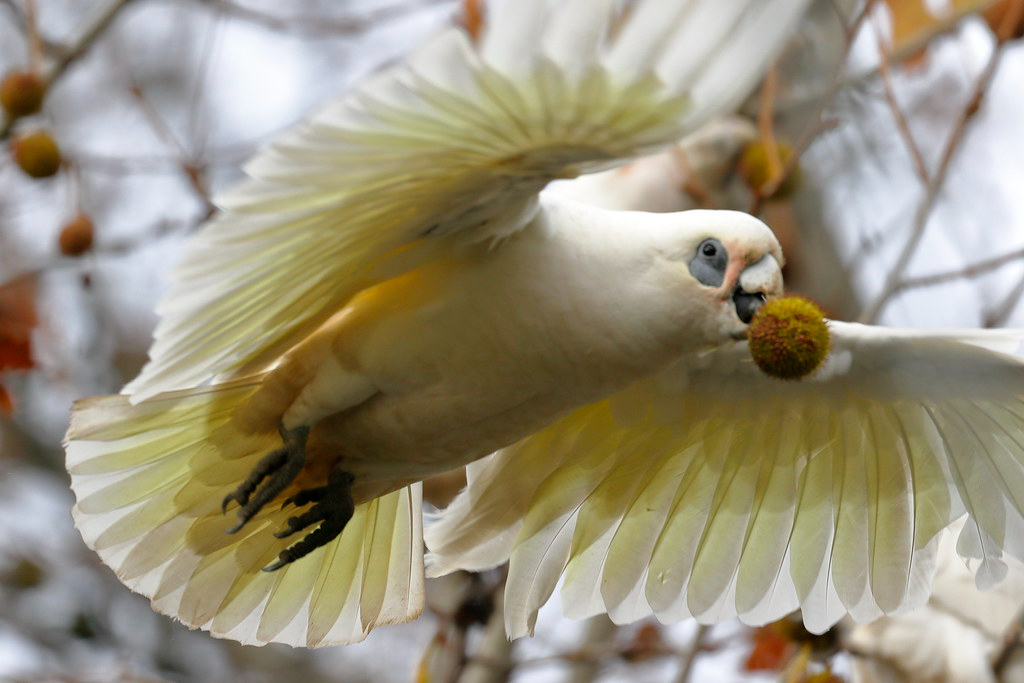
Birdirdirra was the name given to it by the Yindjibarndi people who lived in the central and western parts of the Pilbara. Traditional practices included keeping these birds as pets and adorning head and armbands with the feathers of the birds, which were downy, during traditional ceremonies and dances.
“Little Corella” by Mark Gillow is licensed under CC BY 2.0.

Distribution and Habitat
They can be found in a wide range of settings, from the dry deserts of central Australia to the plains on the eastern coast of the country. Additionally, they can be found in urban locations such as Melbourne, Canberra, Sydney, and Brisbane, where they eat on lawns and playing fields. Others have been seen in rural areas. It is possible for them to cause harm to trees by gnawing the bark off of tiny twigs, which is why they are called crop pests in certain locations.
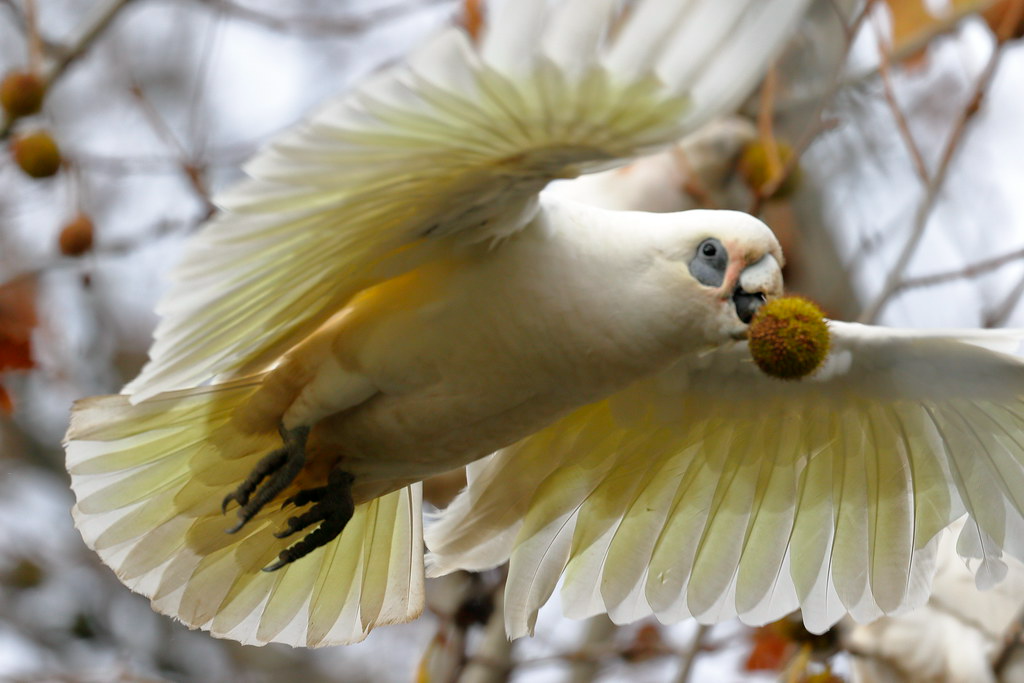
Feeding
Little Corellas primarily feed on the ground, occasionally foraging in trees and shrubs. They consume a variety of wild and cultivated seeds, including lawn grasses in urban areas. They can also be agricultural pests, often feeding on cereal crops like wheat, barley, and maize.
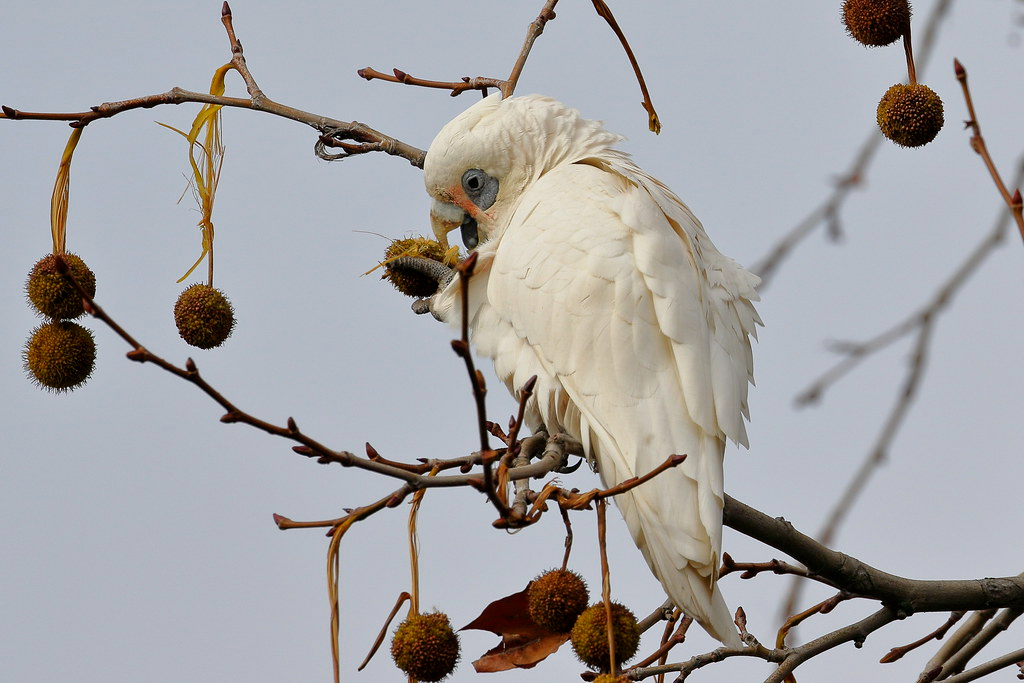
Breeding
Breeding occurs from May to October, with nests typically located in tree hollows, cliff cavities, or termite mounds.
“File:(1)Little corella-998.jpg” by Sardaka is licensed under CC BY-SA 4.0.
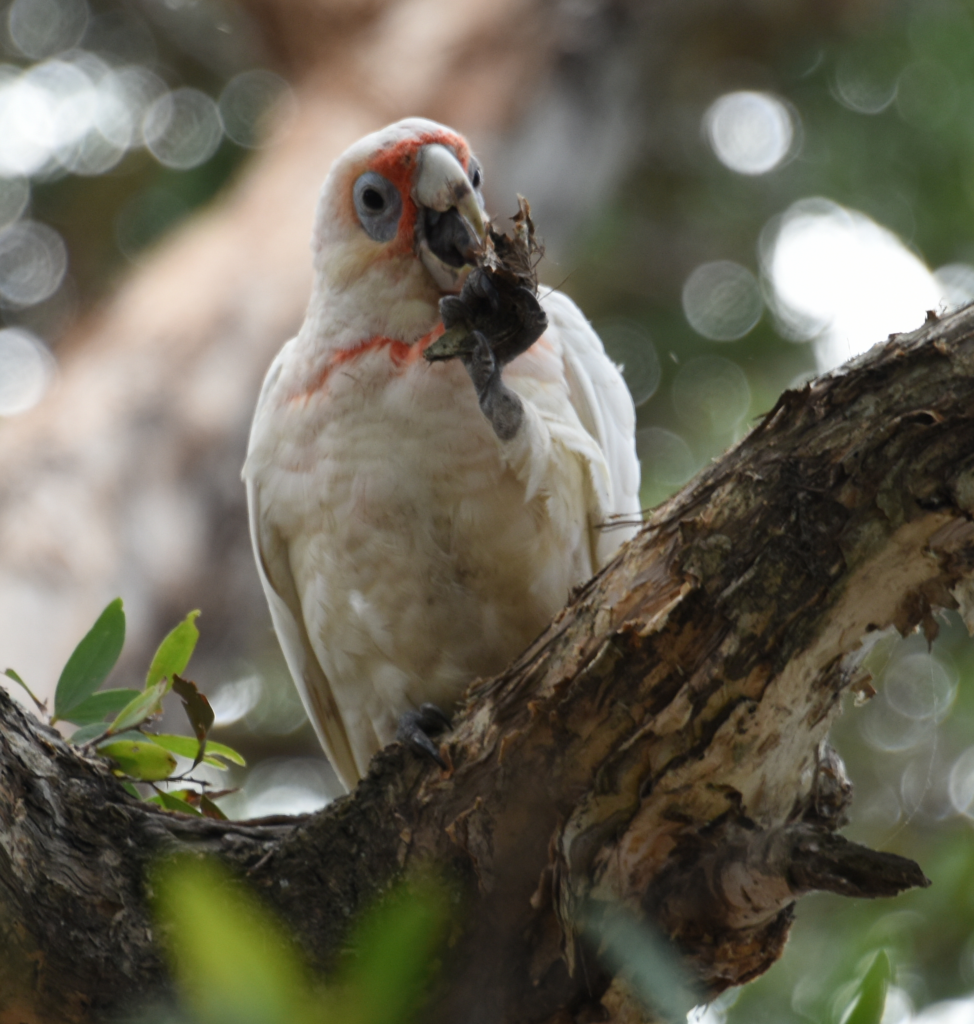
Behavior
Little Corellas form flocks of up to several thousand individuals, often mingling with other bird species like galahs, sulphur-crested cockatoos, and red-tailed black cockatoos. They roost in trees overnight and fly out to feed in the early morning, returning in the late evening. These flocks can cover significant distances between feeding and roosting areas, and in desert regions, they must fly to watering holes twice daily.
“File:(1)Little corellas Centennial Park 267.jpg” by Sardaka is licensed under CC BY-SA 4.0.
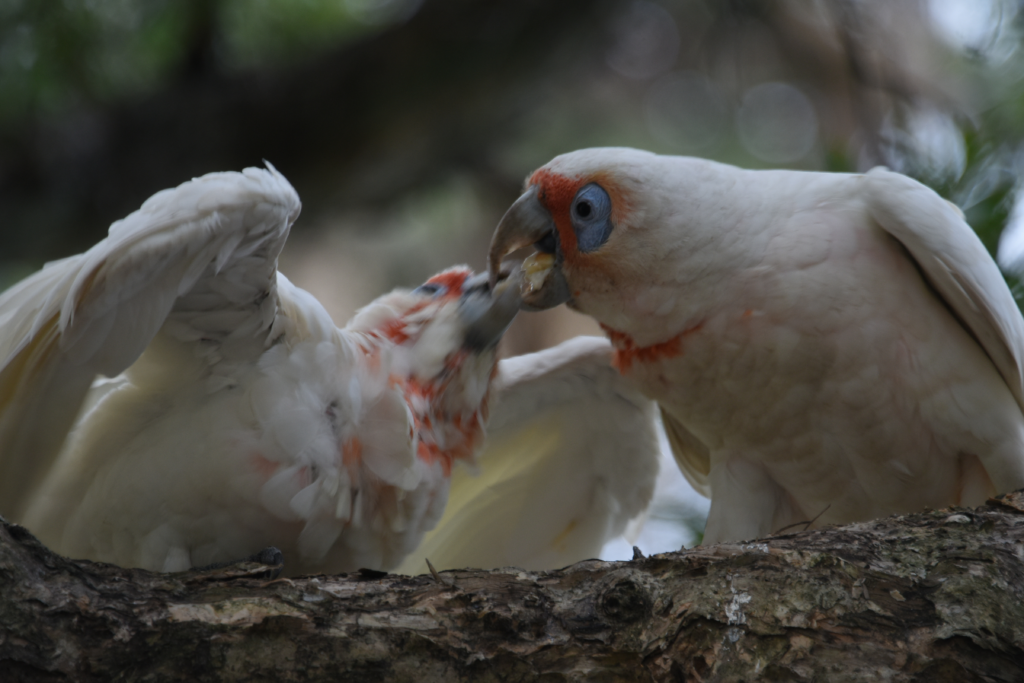
Call
Their calls consist of high-pitched notes and screeches, somewhat resembling the sulfur-crested cockatoo. Large flocks can create a deafening screeching sound audible from several kilometers away.
“Little corella” by Stephen Edmonds is licensed under CC BY-SA 2.0.
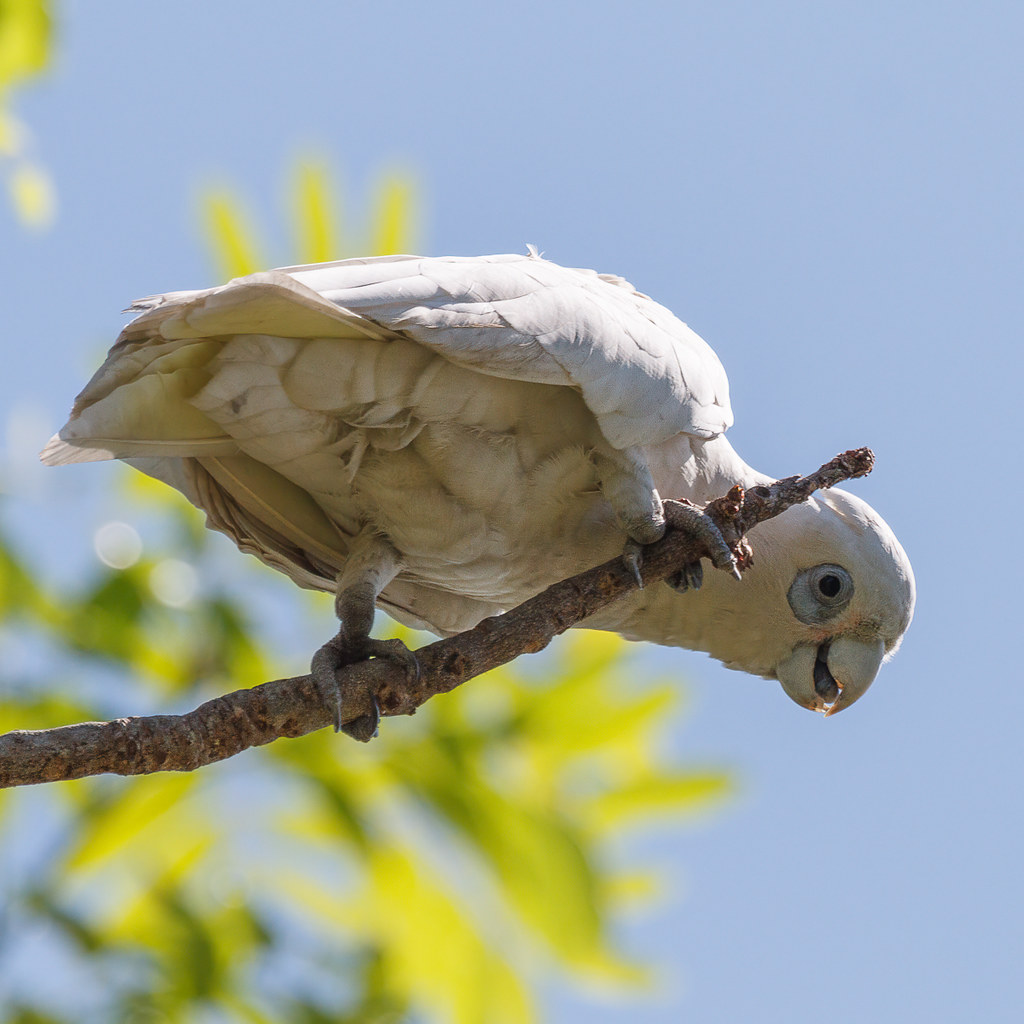
Relationship to Humans and Threats
In South Australia, Little Corellas are classified as “unprotected native fauna” and may be shot, trapped, or gassed by landowners without a permit. Permits are available to capture a limited number of Little Corellas from the wild each year for avicultural purposes.
“Little Corellas” by Miss Dilettante is licensed under CC BY-SA 2.0.
